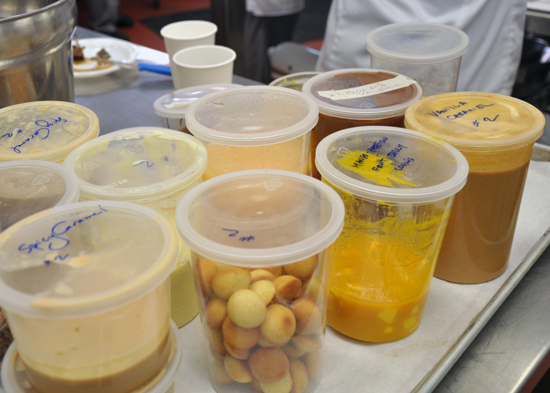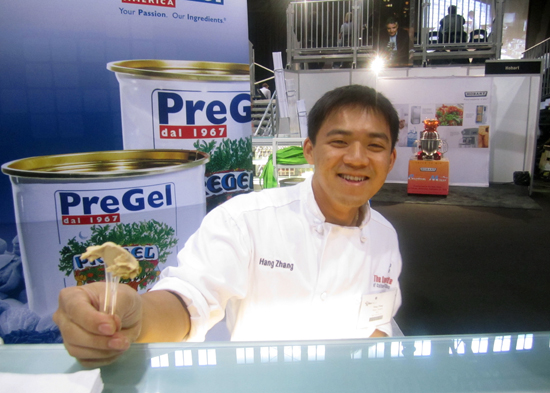How do we define the creativity of chefs?
This week over 1,000 savory and pastry chefs, restaurant managers, sommeliers and other industry professionals gathered at The Park Avenue Armory for the 3-day International Chefs Congress (ICC), organized by StarChefs.com. I had the opportunity to attend two of the many presentations that discussed this year’s theme, an exploration of the debate Craft vs. Art. I attended a presentation by “Shock-o-latier” Dominique Persoone (The Chocolate Line) and gastronomical scientist Bernard Lahousse (Sense for Taste, FoodPairing) about how emotions and memories affect taste, as well as El Bulli’s Albert Adrià’s presentation taking us deeper into the contents of his books Natura and A Day at El Bulli.
What did I take away from these two presentations? Both, at the core, focused on three things: Simplicity. Technique. Fun. In terms of simplicity, what these chefs shared was completely in line with my lessons in the Pastry & Baking Arts program at ICE. Chef Nicole advised us to use only three flavors maximum in a dessert. “Keep it simple,” she said. Adrià also shared, “If I can only put three, I'm not going to put six.” Chef Scott reminded us how important it is to choose a color that makes sense for your dessert. Adrià agreed, “If it's pistachio, and it's not green, there's something wrong.” When it is the same color as the product, the aroma and the taste to follow will be in line and good.

The Belgian duo of Persooone and Lahousse took flavor combinations one step further, which brings me to the discussion of technique and technology. As they said, "if two ingredients are incompatible, you have to search for something in between.” How do they search for this in-between ingredient? At a molecular level. Lahousse has identified common major flavor components of chocolates to determine some really interesting combinations. For instance, you may not think chocolate and caviar have much in common, but they share major flavor components and thus, would be a good scientific flavor combination.

The dynamic duo also led us into a tasting of four chocolates, so we could taste the results of all of their research! Before tasting each, we watched a video to incorporate our sense of sight and sound to the smell and taste of what we were about to consume. I sat watching scenes of a beach and eating a shell-shaped chocolate made with oyster meat, seeing green grass juice pour out of another as I watched someone mowing a lawn, or the very interesting chocolate and water combination, which required a film of cocoa butter around the water to make the combination work.
Surprisingly, one of my favorites was the chocolate tequila shot, complete with salt, syringe of tequila and a chocolate. Man, if they served those at bars, I’d probably go back to thinking tequila shots are fun. Speaking of fun, this industry is just that. It’s such a priority that both of these presentations touched on the importance of keeping things fun. Whether it was Adrià showing scenes from Inopia Classic Bar, his tapas bar in Barcelona, illustrating his fun side, or Persoone demonstrating the use of a cocoa powder shooter that he developed for a Rolling Stones party.
For a chef, what is creativity? It seems there are three key aspects:
- Simple and good ingredients,
- Technique rooted in tradition and
- The willingness and spirit to just have fun with it.



